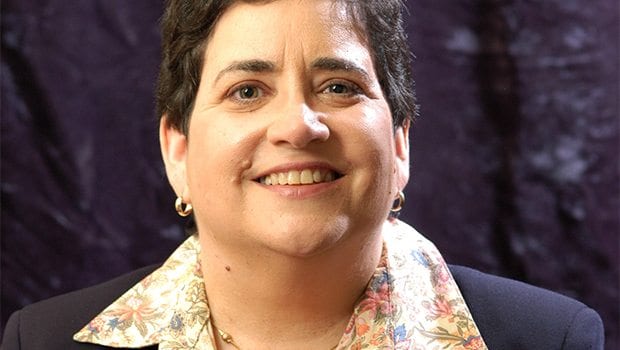
The big story out of November’s midterm elections was the victories of the Republican Party: The GOP won control of the Senate, boosted their majority in the House of Representatives, and picked up two governor’s seats. But Republicans aren’t the only ones who made important gains in November.
Latinos also posted groundbreaking wins, with five new candidates, both Democrats and Republicans, claiming seats in the House. These victories will bring the total number of Latino members of Congress up to 32 — the highest ever.
“The 114th Congress is the largest incoming class of Latinos in U.S. history,” says Gabriel Sanchez, director of research for Latino Decisions, a leading Latino political opinion research group. “Of those five new Congressmen, three are Democrats and two are Republicans, which shows that one of the things you can say about the current political climate is that Latinos are as effective on the Republican side of things as the Democratic side. And that’s a relatively new trend.”
The new Latino representatives are Ruben Gallego, a Democrat from Arizona; Pete Aguilar, a Democrat from California; Norma Torres, a Democrat from California; Carlos Curbelo, a Republican from Florida; and Alex Mooney, a Republican from West Virginia. They will join 19 other Latino House Democrats, 5 House Republicans, 2 Senate Republicans and one Senate Democrat.
Sanchez, who is also an associate professor of political science at the University of New Mexico, says the reason for this uptick in the number of Latino Republicans is that the GOP has been willing to put money and support behind Latino candidates across the country.
“That’s clearly been part of the Republican strategy,” he says. “It’s a lot easier for the Republican Party to recruit Latino candidates than change their policies that affect Latino voters.”
The other trend that Sanchez identifies is that these five new Latino members of Congress come from diverse constituencies. While Ruben Gallego was elected in Arizona to succeed 71-year-old Ed Pastor, the state’s first Latino congressman — “filling a vacancy in what’s been a Hispanic-run district for a long time,” Sanchez says — Alex Mooney became the first Latino congressman in West Virginia, a state where Latinos comprise just one percent of the total population.
“It means that you don’t have to be from an overwhelming Latino district to have a prospect of winning, if you’re a Latino candidate,” says Sanchez.
Rosalind Gold, senior director of policy, research and advocacy at the National Association of Latino Elected and Appointed Officials, agrees.
“The new members of Congress represent the spectrum from traditional population centers to places where the Latino community is just starting to grow,” she says. “West Virginia has a very small Latino population, and that reflects the fact that Latinos can lead and represent diverse constituencies. They can lead and represent constituencies in diverse parts of the nation, and they can lead and be part of both political parties.”
But whether this tide of Latino representation will translate into policies that Latino communities care about remains to be seen. Sanchez says that data from Latino Decisions shows “immigration was the most important issue to Latino voters, and then jobs and the economy — and that’s a flip-flop of those two issues from what we saw in 2012.”
Gold says that on top of immigration, Latinos “care passionately about the same issues that all Americans care about.”
“They want our nation to fix its broken immigration system,” she says, “but they also want to make sure that their families have employment opportunities, that there’s a good climate for small businesses — that they run and operate — that their children have good education and that there’s good health care available.”
Even though Latino voters came out in big numbers in 2012 for President Obama — 71 percent voted for him, while 27 percent voted for Romney — comprehensive immigration reform stalled in Congress, and the administration deported a record number of undocumented immigrants in 2013.
This failure to enact comprehensive immigration reform, Sanchez says, “absolutely” affected this year’s midterm elections, which featured lower than expected turnout among Latino voters, and a noticeable shift toward Republican candidates. (Gold says that President Obama’s immigration action announced last month will be “one of many factors that Latinos are going to be looking at” during the 2016 elections.)
But Gold says that winning the Latino vote in 2016 isn’t just about policy — it’s also about strategy. Citing Latino Decisions, she says that ahead of November’s elections, only 55 percent of likely Latino voters say they were contacted by any campaign or political party and asked to vote or register to vote.
“If neither party can afford to take the Latino vote for granted, neither party can afford to ignore Latinos,” she says.
While most Latinos live in the politically uncompetitive states of California and Texas, a growing number now live in swing states — and are shaping elections there. For example, in Colorado this year, Sanchez says that Mark Udall, who was running for re-election in the Senate, lost in part because Latino voter turnout was so low.
After all, Latinos are the largest minority group in the United States, comprising 17 percent of the population and 11 percent of eligible voters nationwide. Each year, 800,000 Latinos turn 18, becoming new eligible voters. Republican strategists and Latino Decisions have both estimated that presidential candidates will need about 40 percent of the Latino vote to win.
“The path to political victory, whether it’s in Congress, whether it’s in state legislatures, or whether it’s the White House, goes through the Latino community,” says Gold. “Because Latino voters are willing to listen to either political party… It would be a wise course of action for both parties to increase their investment in recruiting and supporting Latino candidates.”






